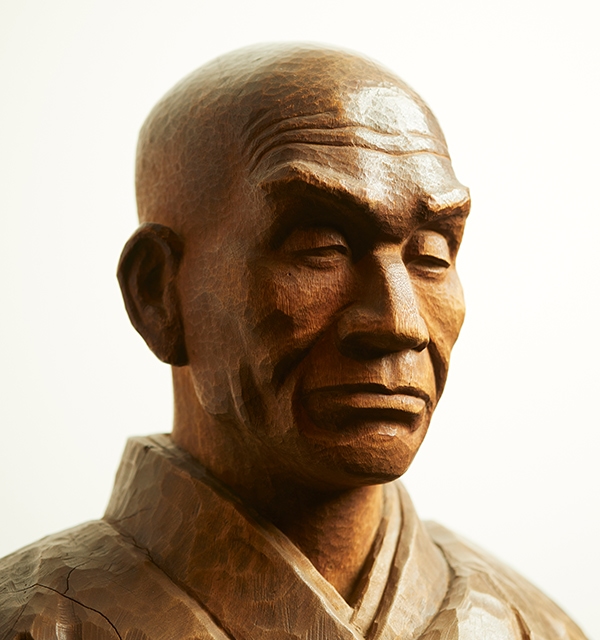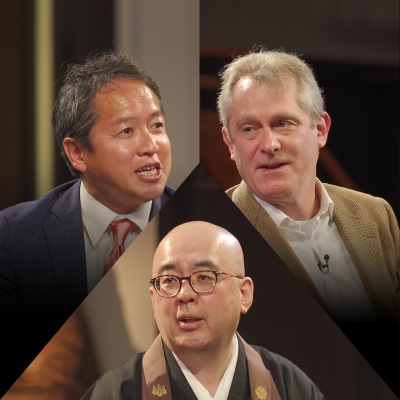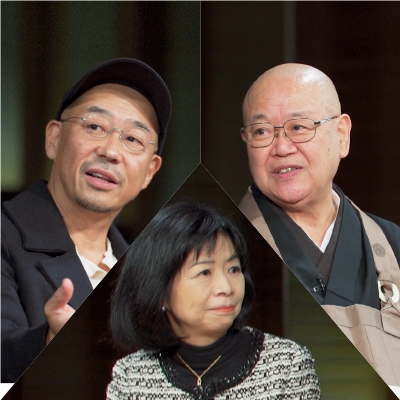
Thinking of Zen Teacher Kodo Sawaki, who started the lesson in Zazen at Komazawa University(3)
Zen Teacher Sawaki (hereinafter abbreviated as Sawaki), who had entered the Buddhist priesthood(Tokudo=Syukke)at the age of eighteen, investigated, attending Abbot Ryoun Fueoka (hereinafter abbreviated as Fueoka) (Zuishin) in Tamba (Kyoto Prefecture), a superior disciple (Kotei) of Zen Master Bokusan Nishiari *1. Under Fueoka’s tuition, he was taught the importance of studying kyogaku ( general Buddhist Studies) . In order to understand Zen, he had learned that it was important to study accurately the basic knowledge of the Buddhism first of all.
Sawaki was taught by Fueoka that, “Not only non-Buddhists (Gedo) but also Nijo *2, sit in Zazen. Although the appearance looks similar, the substance is quite different. Without comprehending the broad range of study on the Buddhism, you will not be able to comprehend Zen Master Dogen’s Shikan-taza also.” “Shikan-taza ” means “Just sit in Zazen” ,but dose not mean to sit, connecting in any kinds of scholarship there. However, we must execute Shikan-taza, just after having been able to be convinced of the reason why “Just sit in Zazen” is enough, upon an absolute comprehension of the substantial significance and content of the word “Just (Shikan)”.
Under the tuition of Fueoka, Sawaki studied and made up his mind to investigate the basic teachings of the Buddhism. However, before long, at the age of 21, he was called up to serve in the Japanese Imperial army and came to serve in the Russo-Japanese War. By the way, it is said that Sawaki was courageous, bold and even reckless by nature. Such like Sawaki was, he left many heroic stories at the front during his military service.
These events cast a shadow over Zen monk Sawaki and these heroic stories came to be criticized not a little. However, Sawaki, who studied the religious spirit of Zen Master Dogen and came to devote himself to Zazen all the more, got the realization that he had not been a true brave man
by this time and confessed (Sange) that as children and grandchildren (Jison) of the Buddhist patriarchs (Busso), he should have been extremely ashamed of his past escapades.
Acting on Zen Master Dogen’s teachings, he became free from self, generous, modest, sympathetic with others and had come to be a solid brave man in the end. Recognizing explicitly as follows, “By means of getting free of body and mind, I will not disturb , not be disturbed, and not miss the Bodhi-mind(Hon-shin ),even if I will encounter any kinds of situation. No one but a solid brave man will be able to enact. Those are the very ascetic practices of the Buddha’s truth (Butudo-syugyo) itself.”, he had come to entrust entirely the second half of his life with Zen Master Dogen’s Shikan- taza.
*1 Bokusan Nishiari
1821–1910, Kansyu* of Soji-ji temple, a founder of Saiyu-ji templ and an
extraordinary Buddhist monk lived from the late Edo eras to the Meiji eras,
“Shobogenzo-keiteki” which is minutes of his lectures on “Shobogenzo”
, is well-known.
* Kanshu : a Chief Buddhist monk of the head temple of a sect, translated as
“Chief Abbot”
*2 Nijo (Tow vehicles)
“Shomon-jo and Engaku-jo” or “Dai-jo and Sho-jo”.
in this column, it means Sho-jo(small vehicle) as people characterized by direct
attention to attend their own deliverance preferentially and criticized from Dai-jo,
(big vehicle) characterized by doing so for all of the other first of all
(Continues)
Origins Team, TSUNODA Tairyū

SPECIAL
ZEN,KOMAZAWA,MANAGEMENT
For our 5th discussion in this series we welcomed guest participant Mr. David Atkinson, CEO of Konishi Decorative Arts and Crafts, for a three-way dis・・・
2020.08.07

SPECIAL
ZEN,KOMAZAWA,MOVIE
For our fourth interview we welcomed film director Tatsushi Ōmori as our guest, and together with Komazawa University Chancellor Seishi Nagai and Prof・・・
2020.03.05

